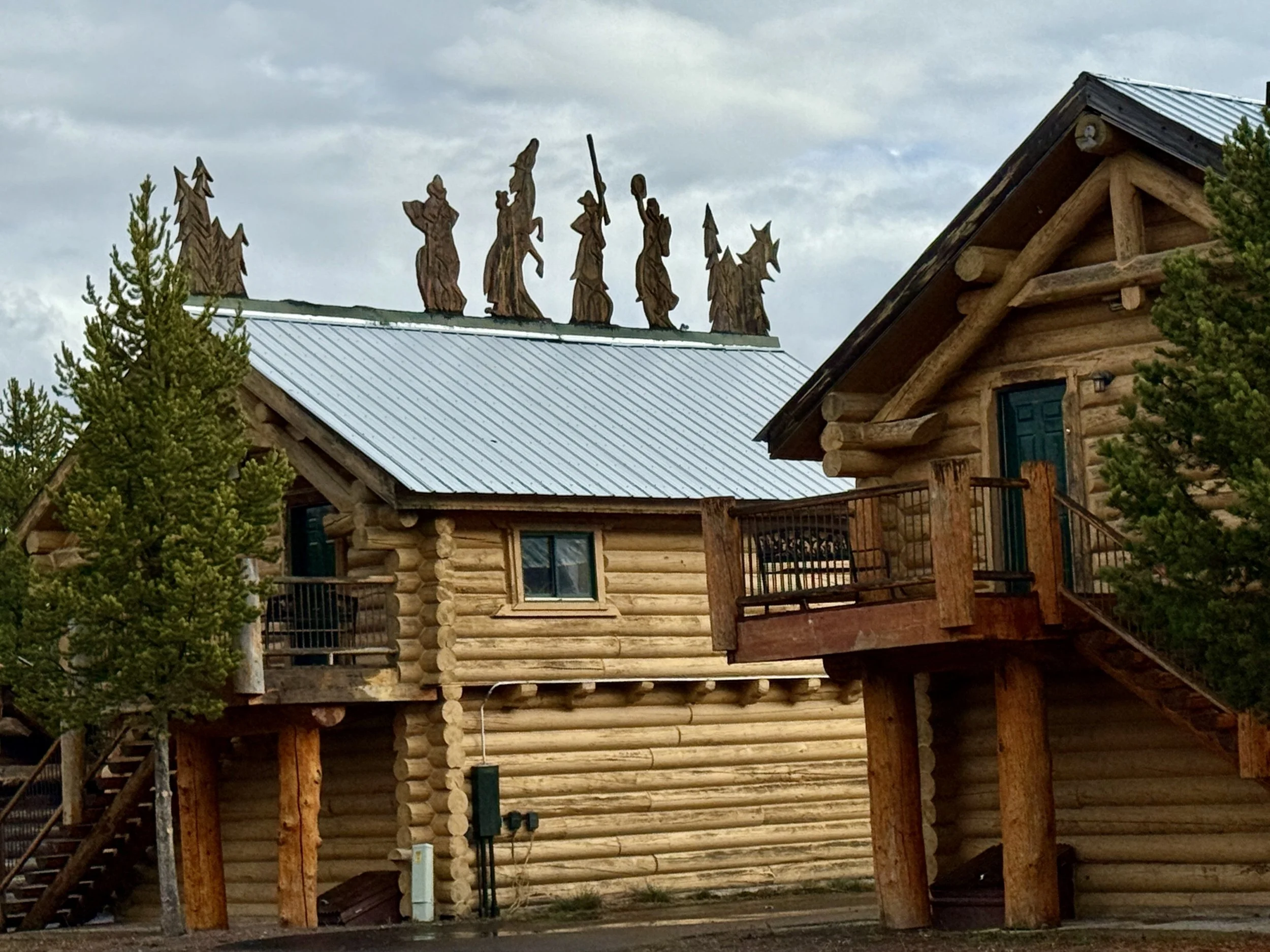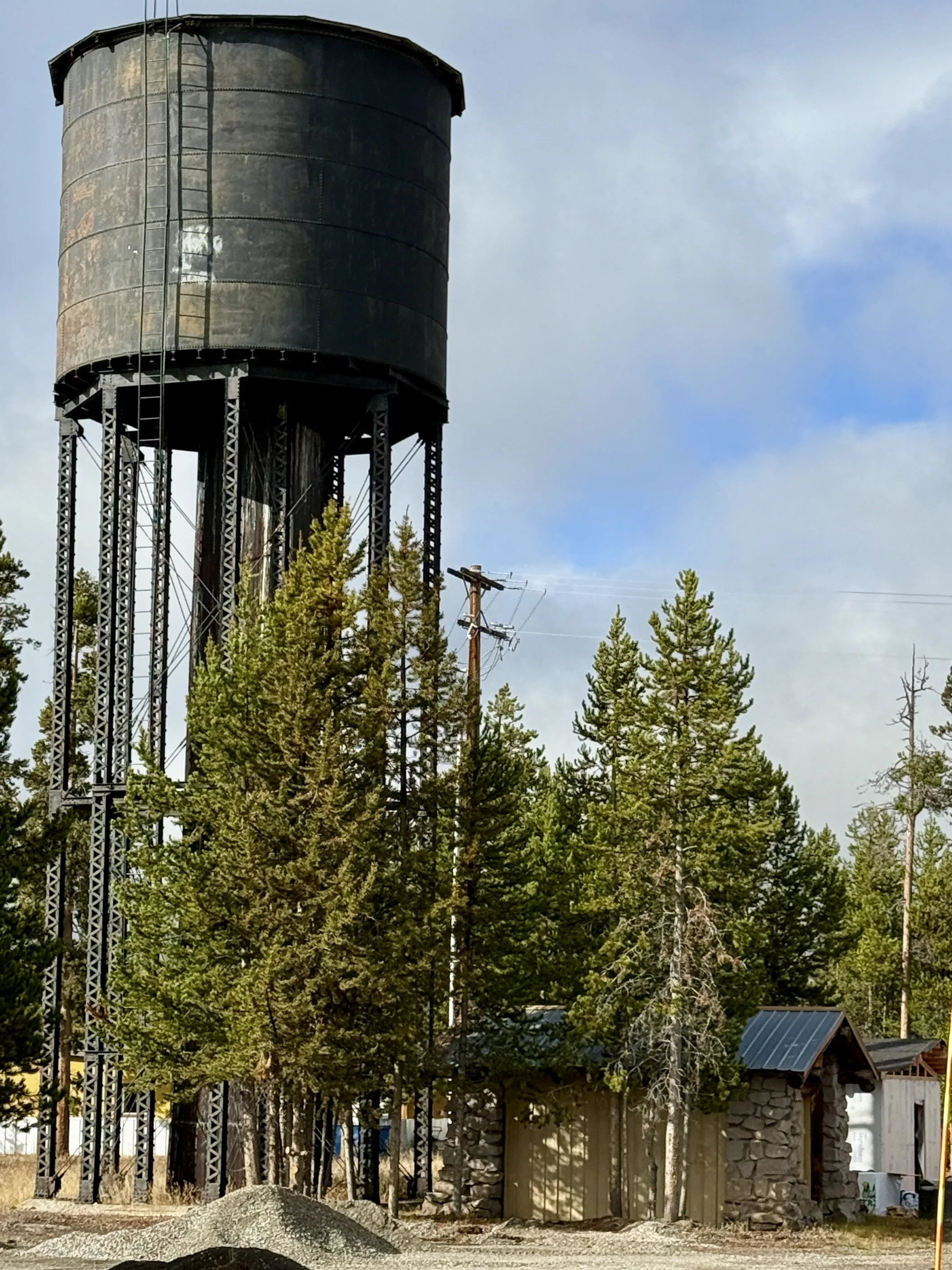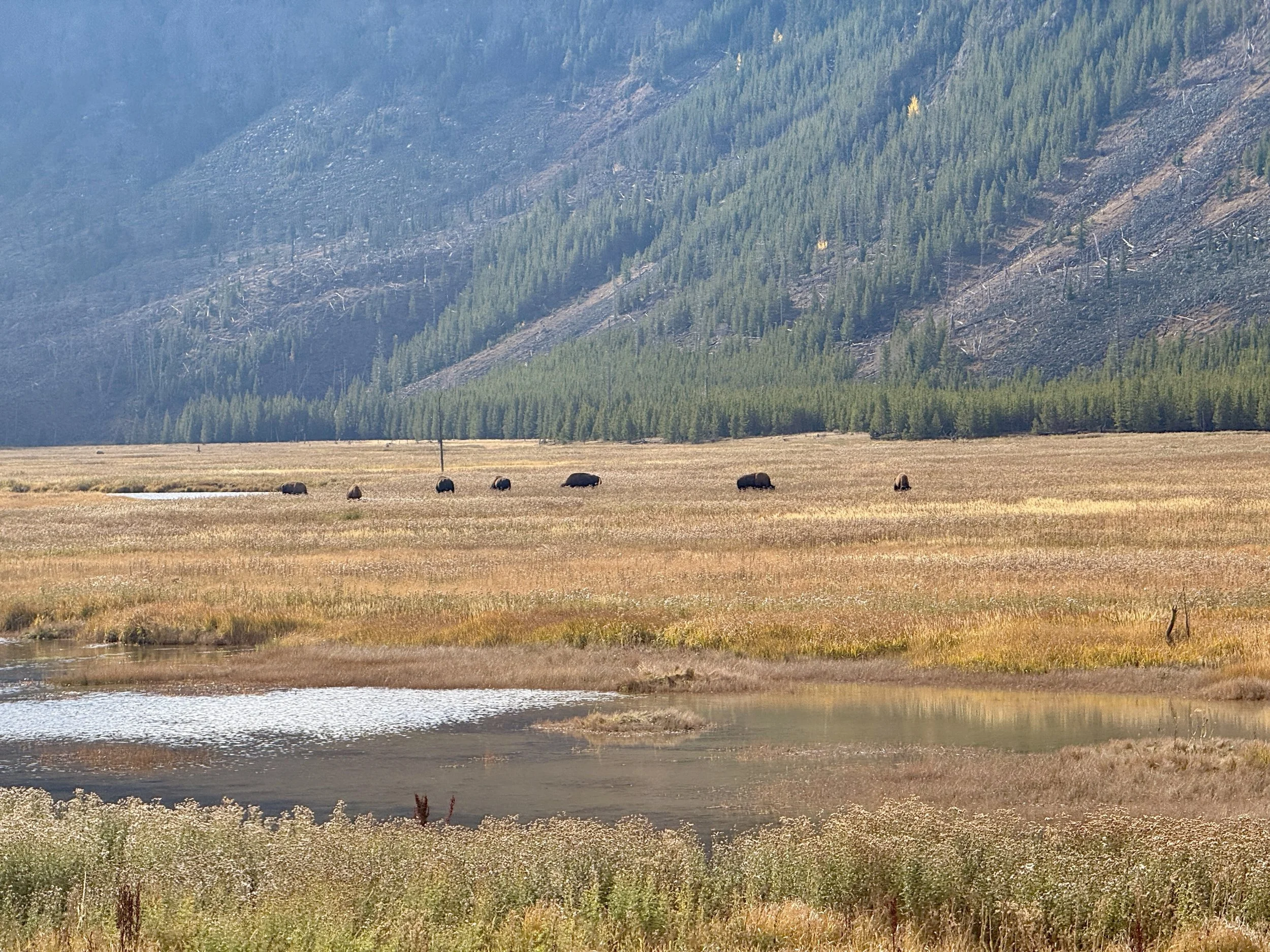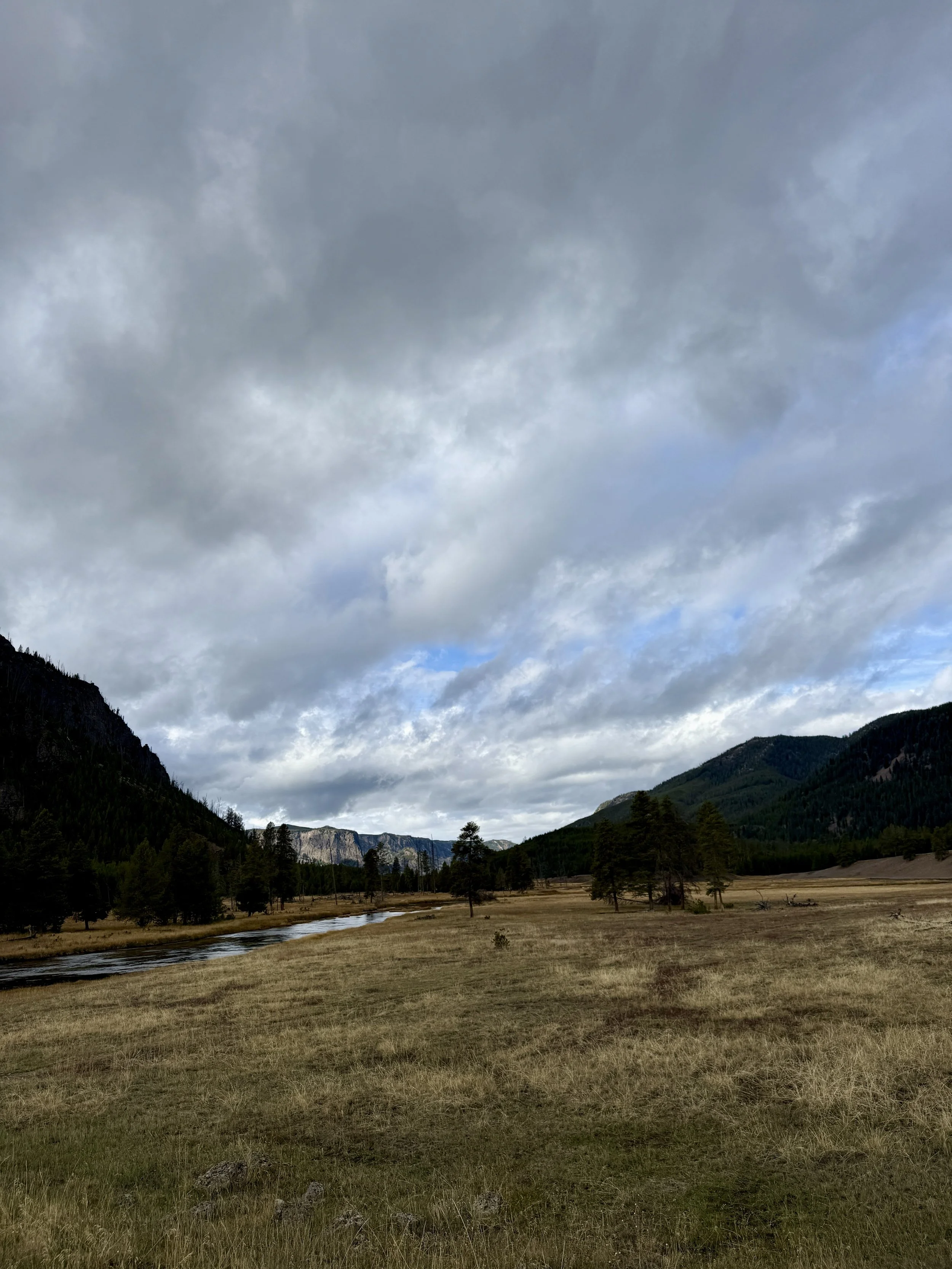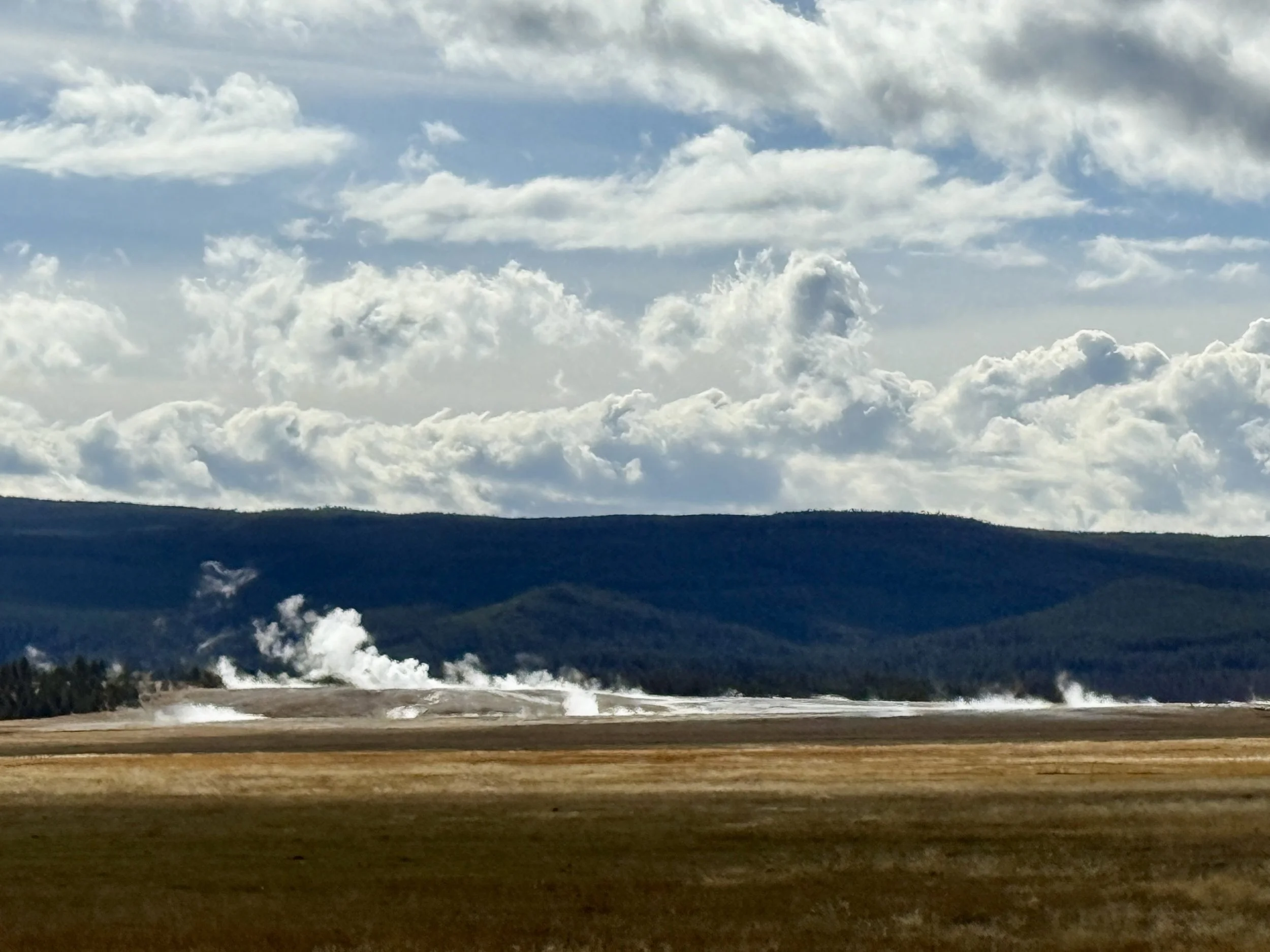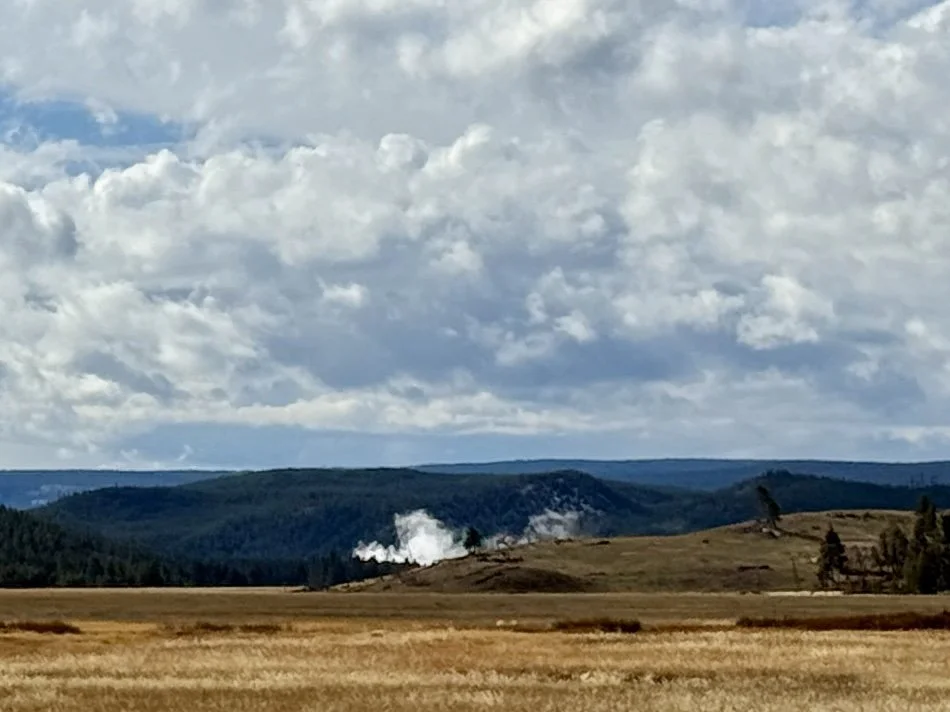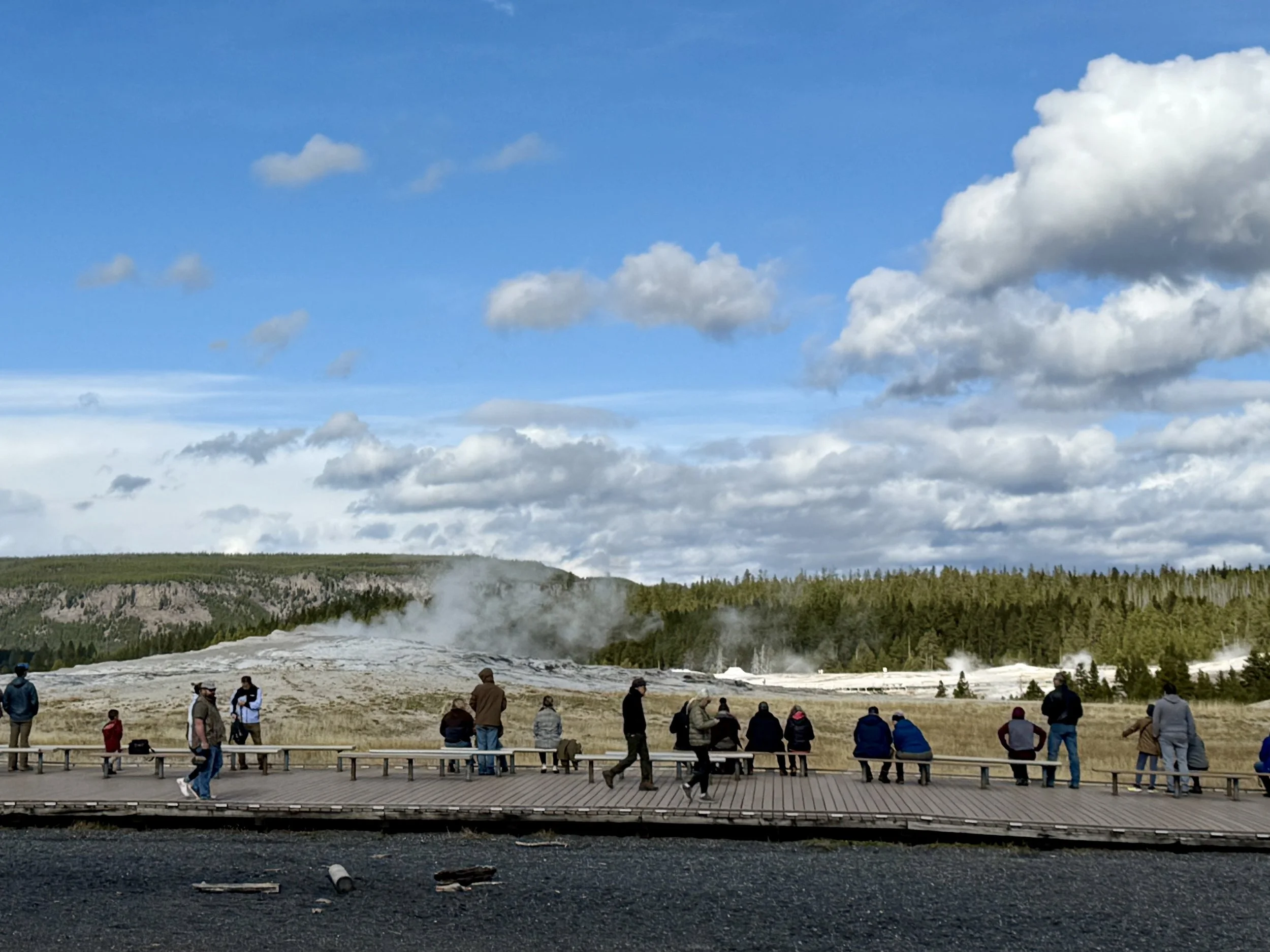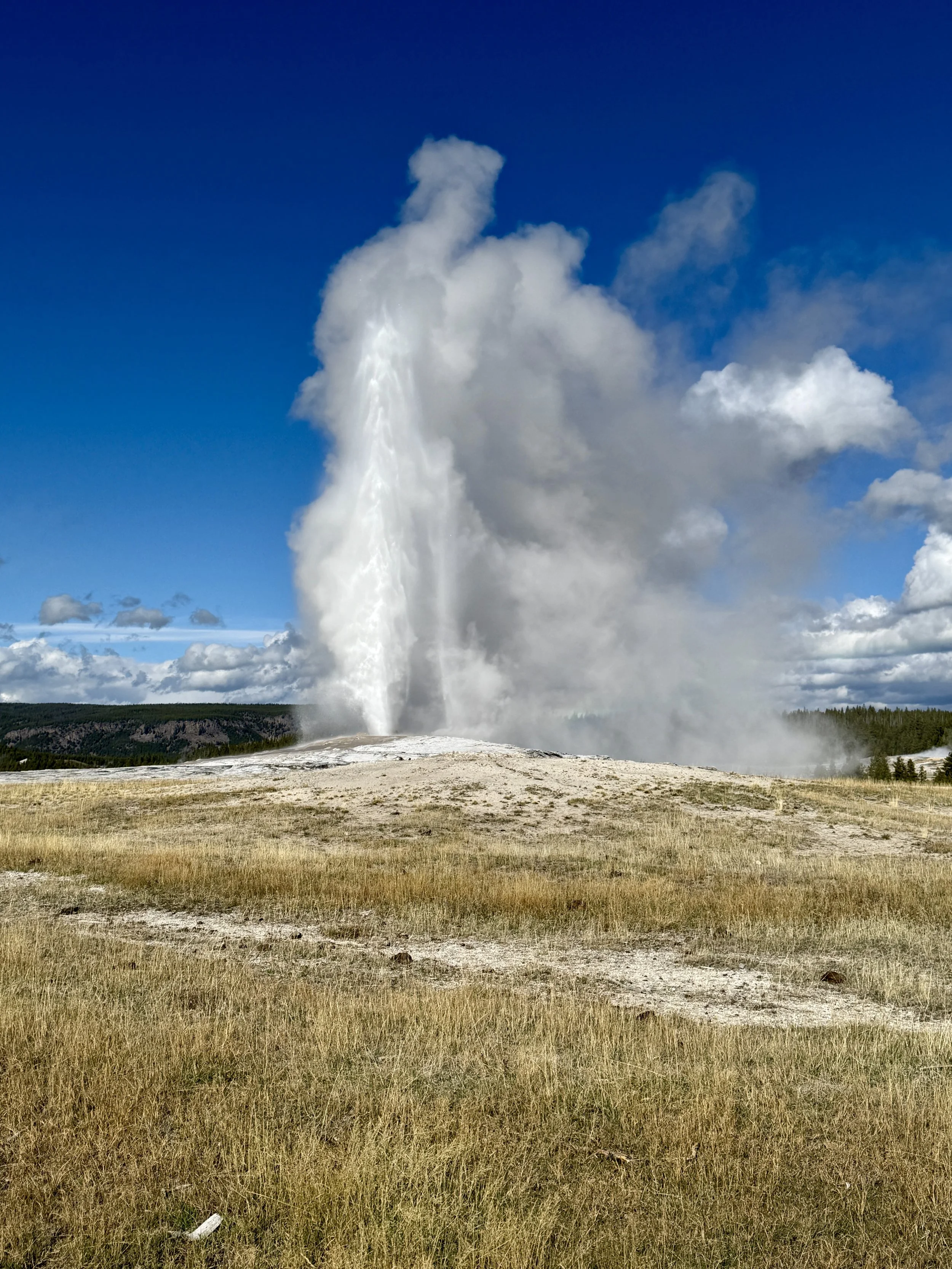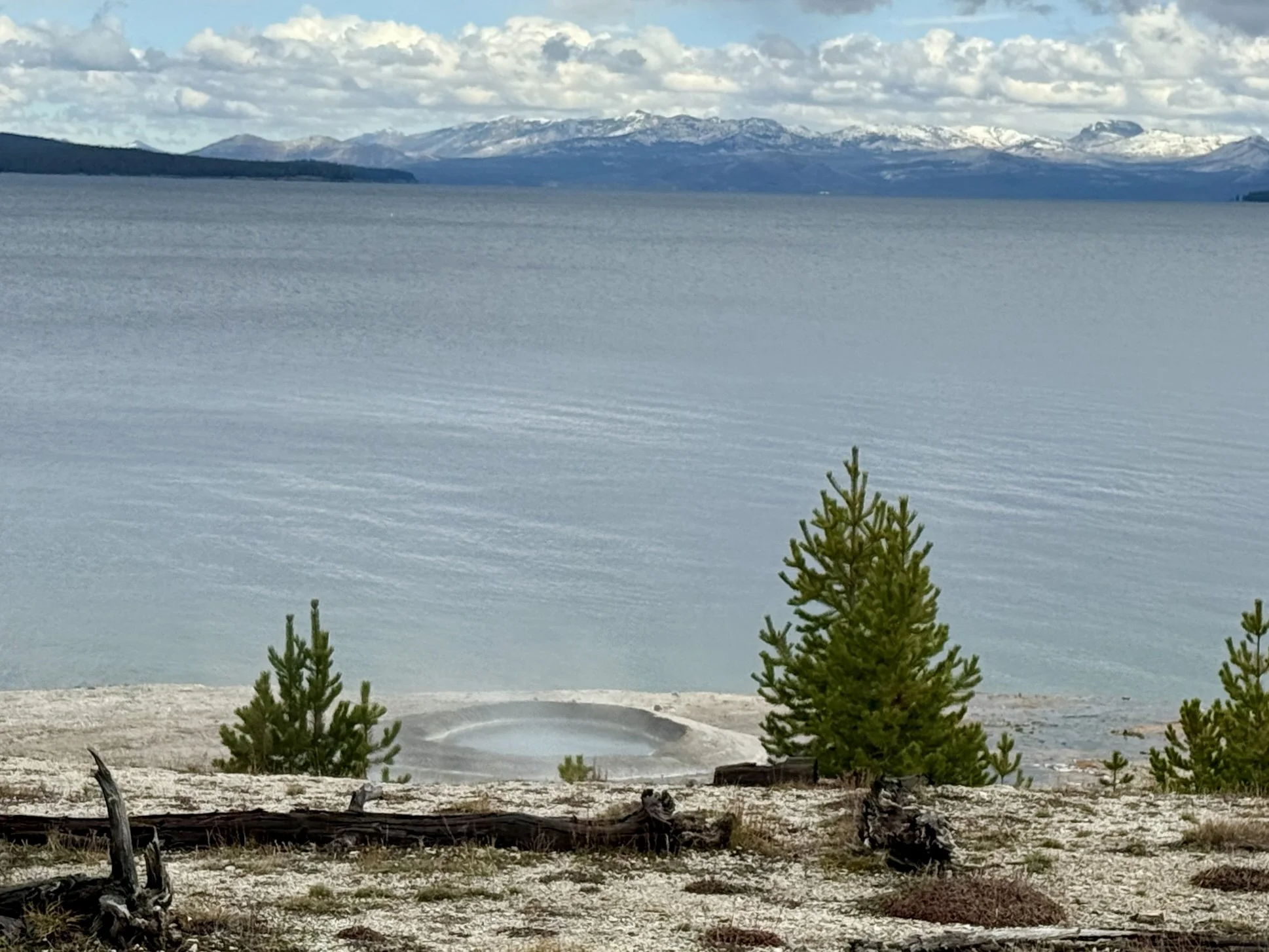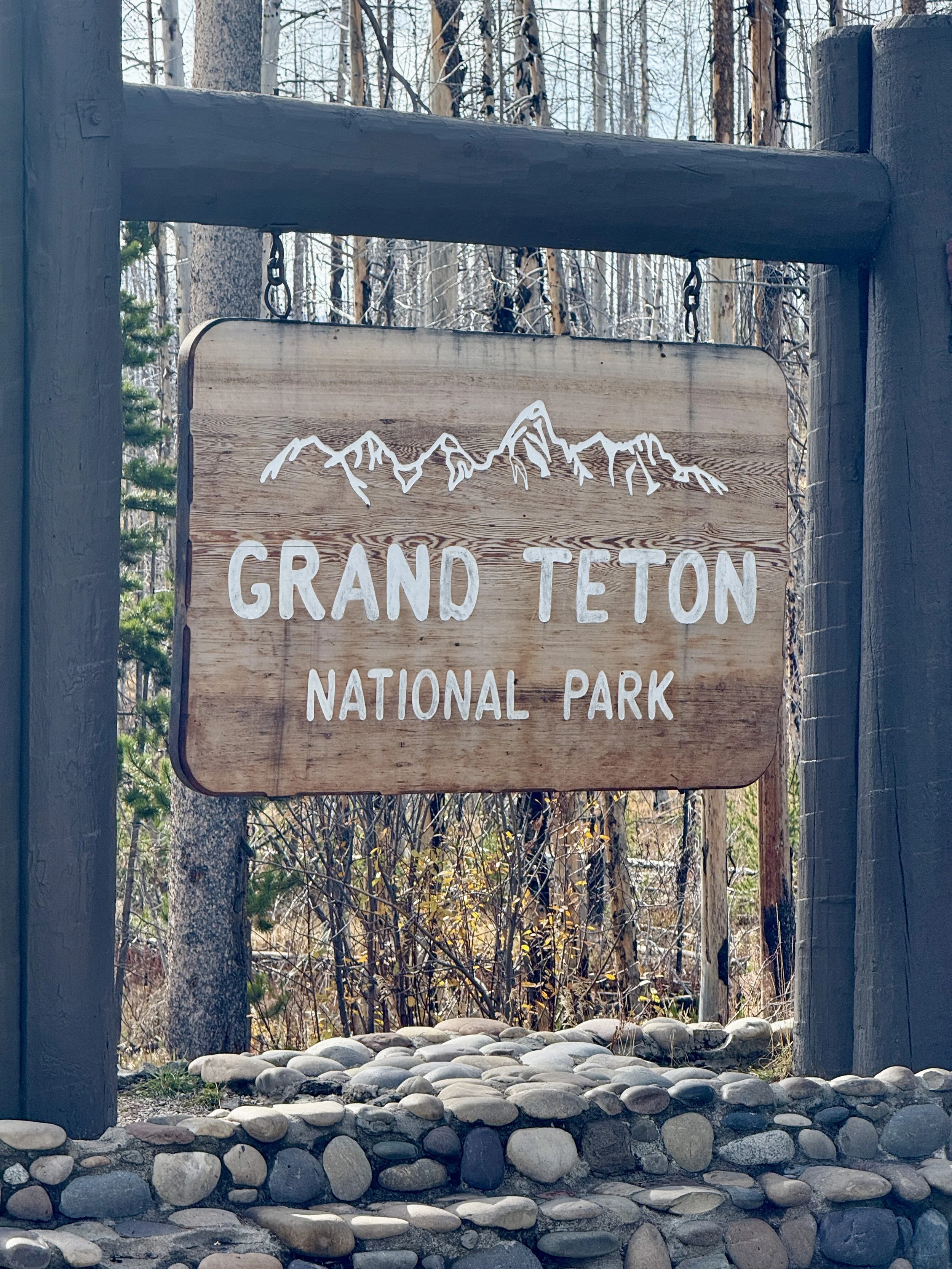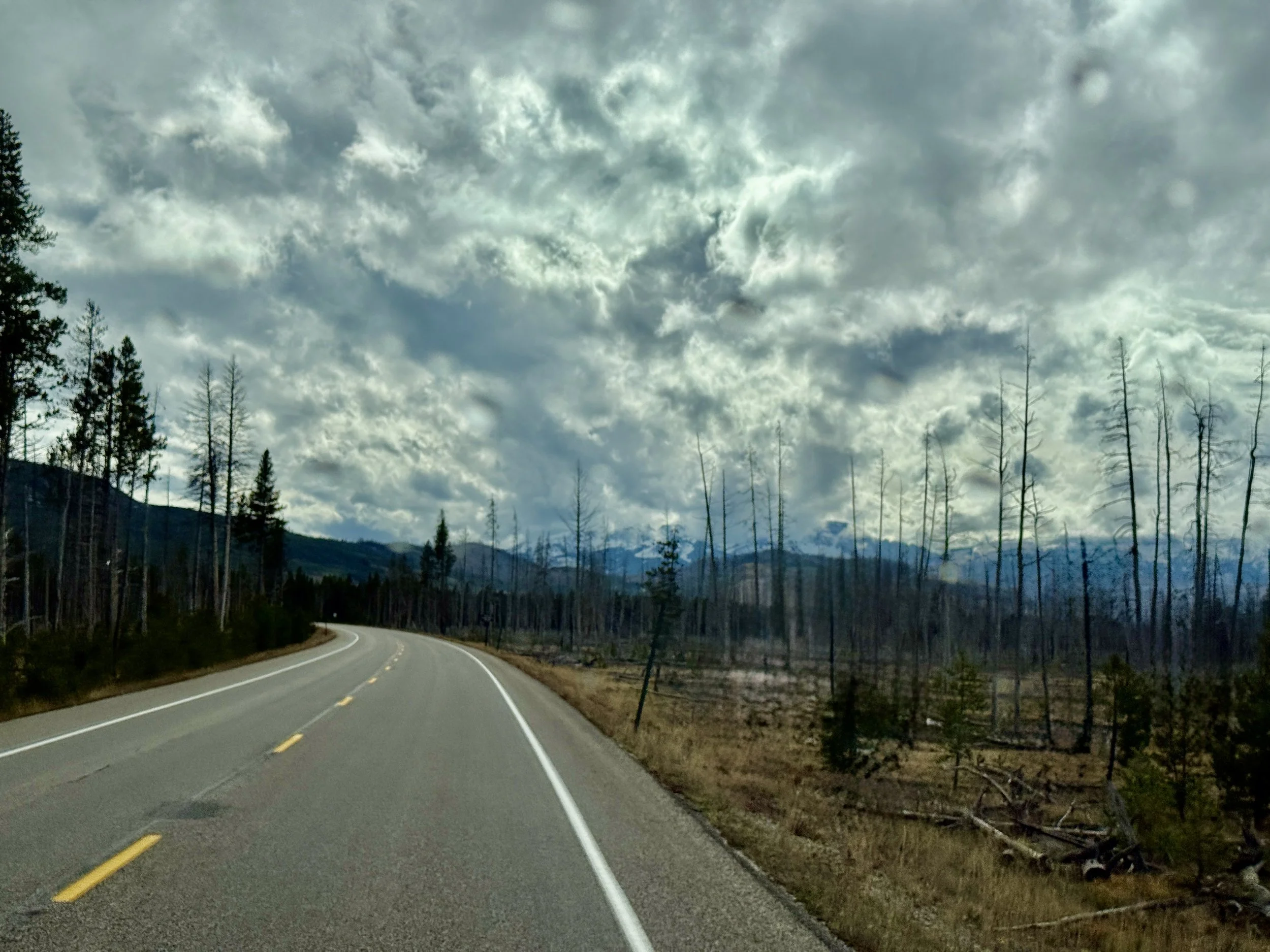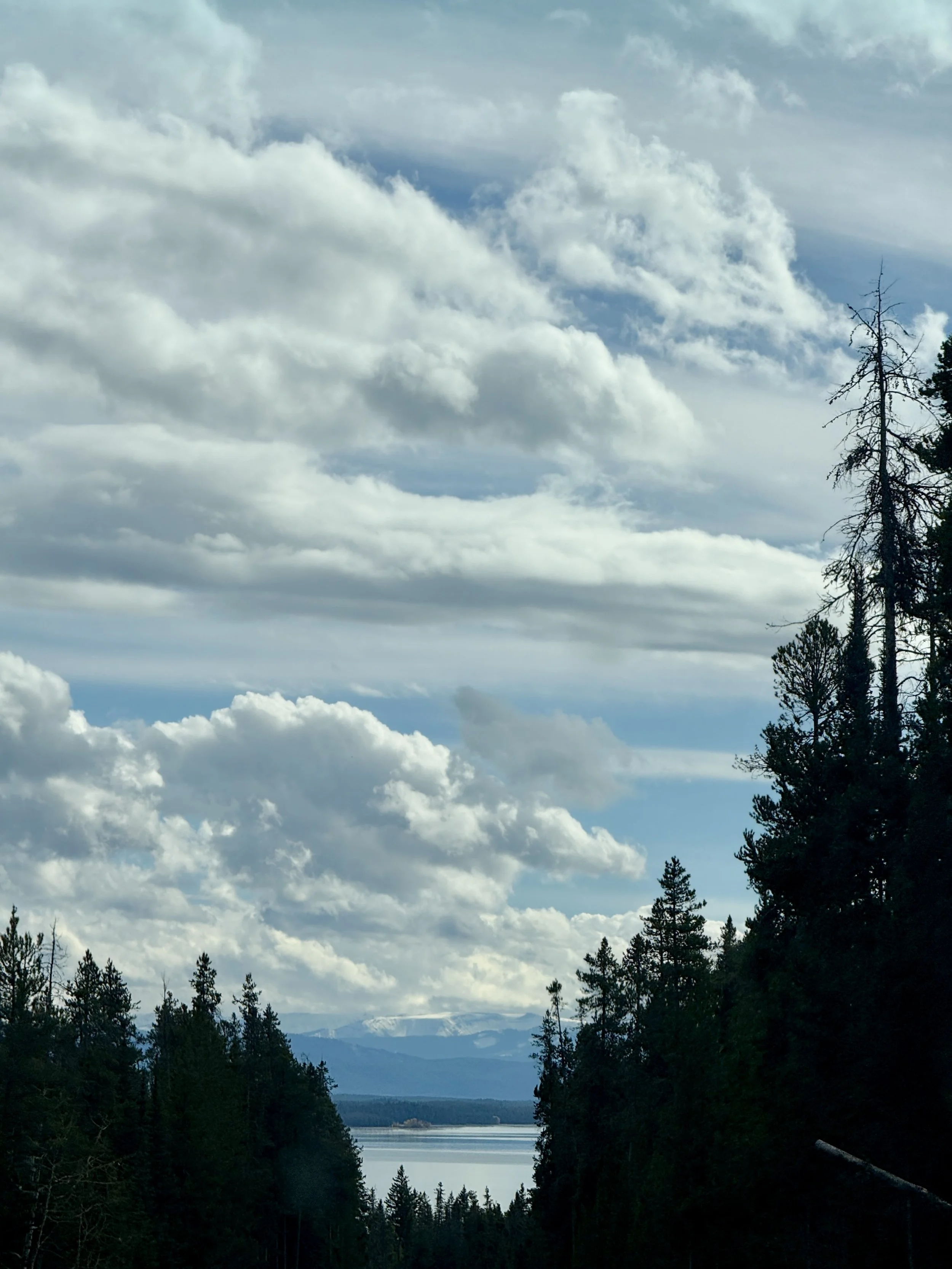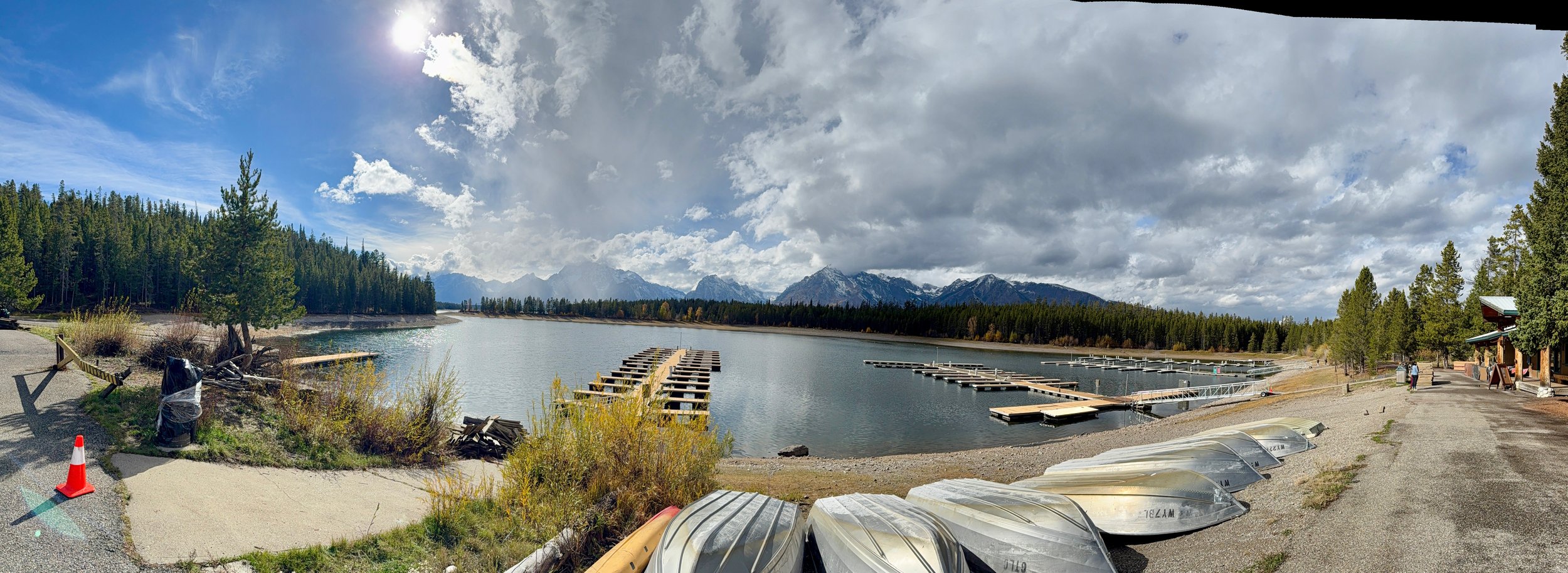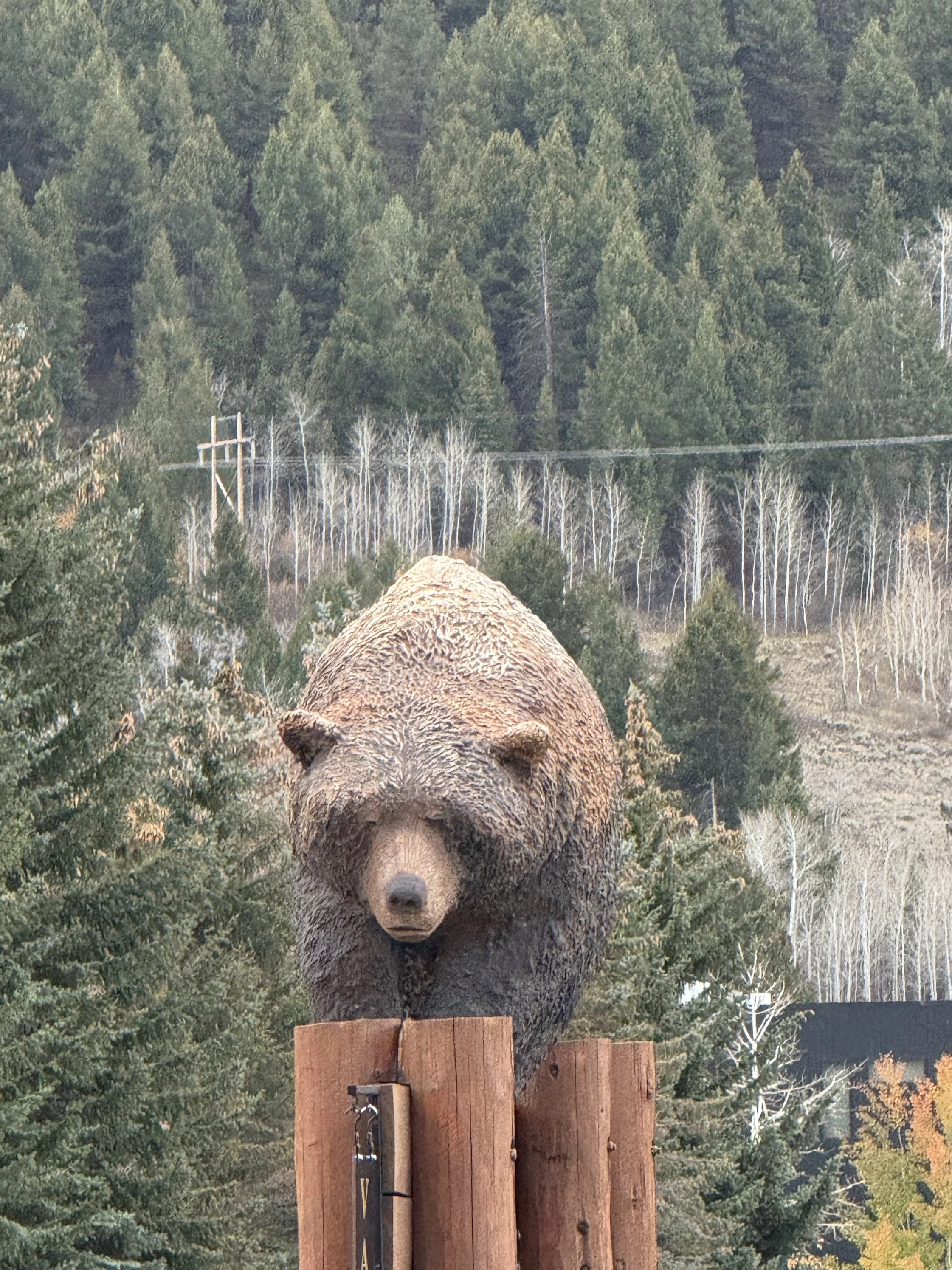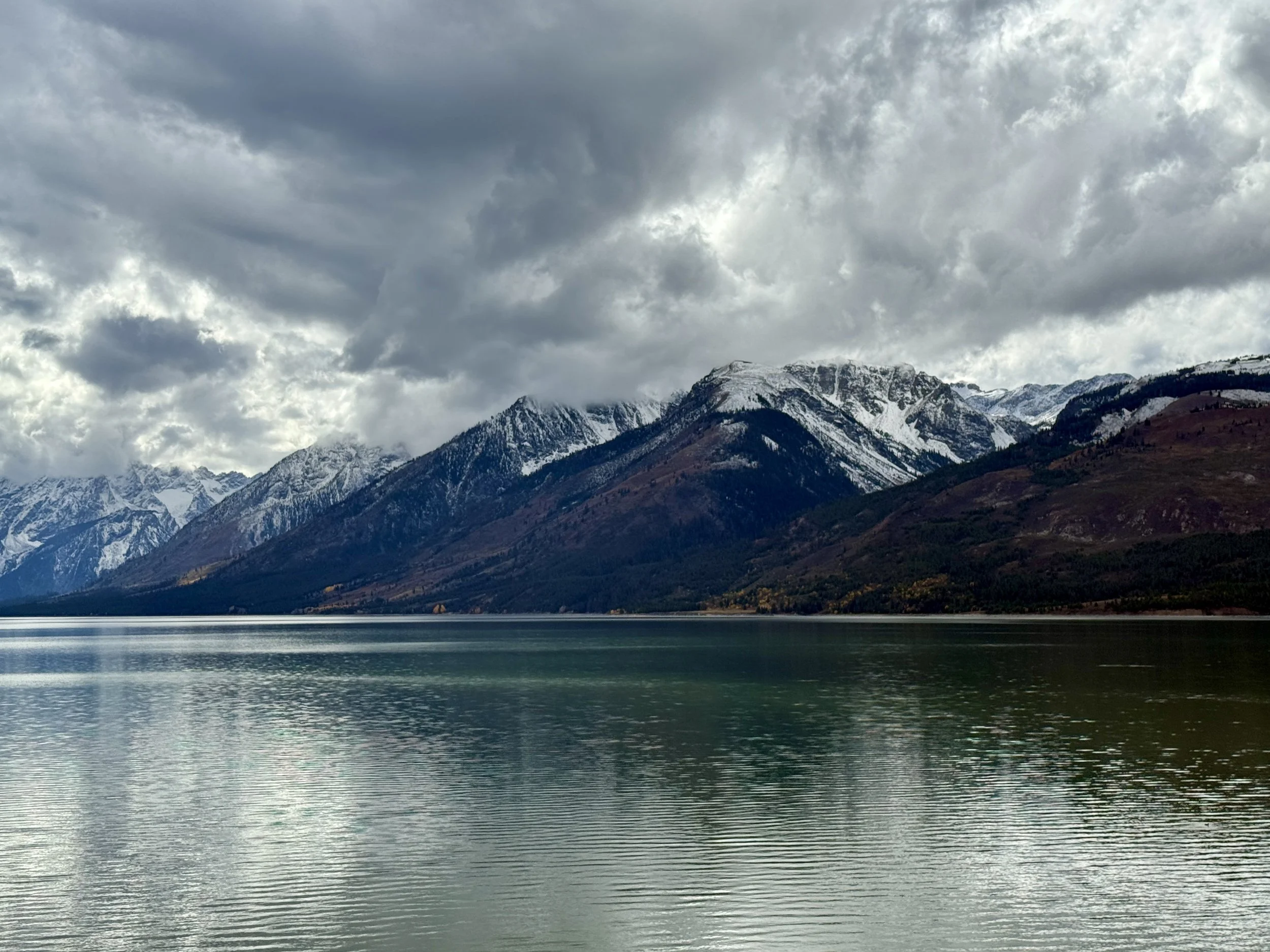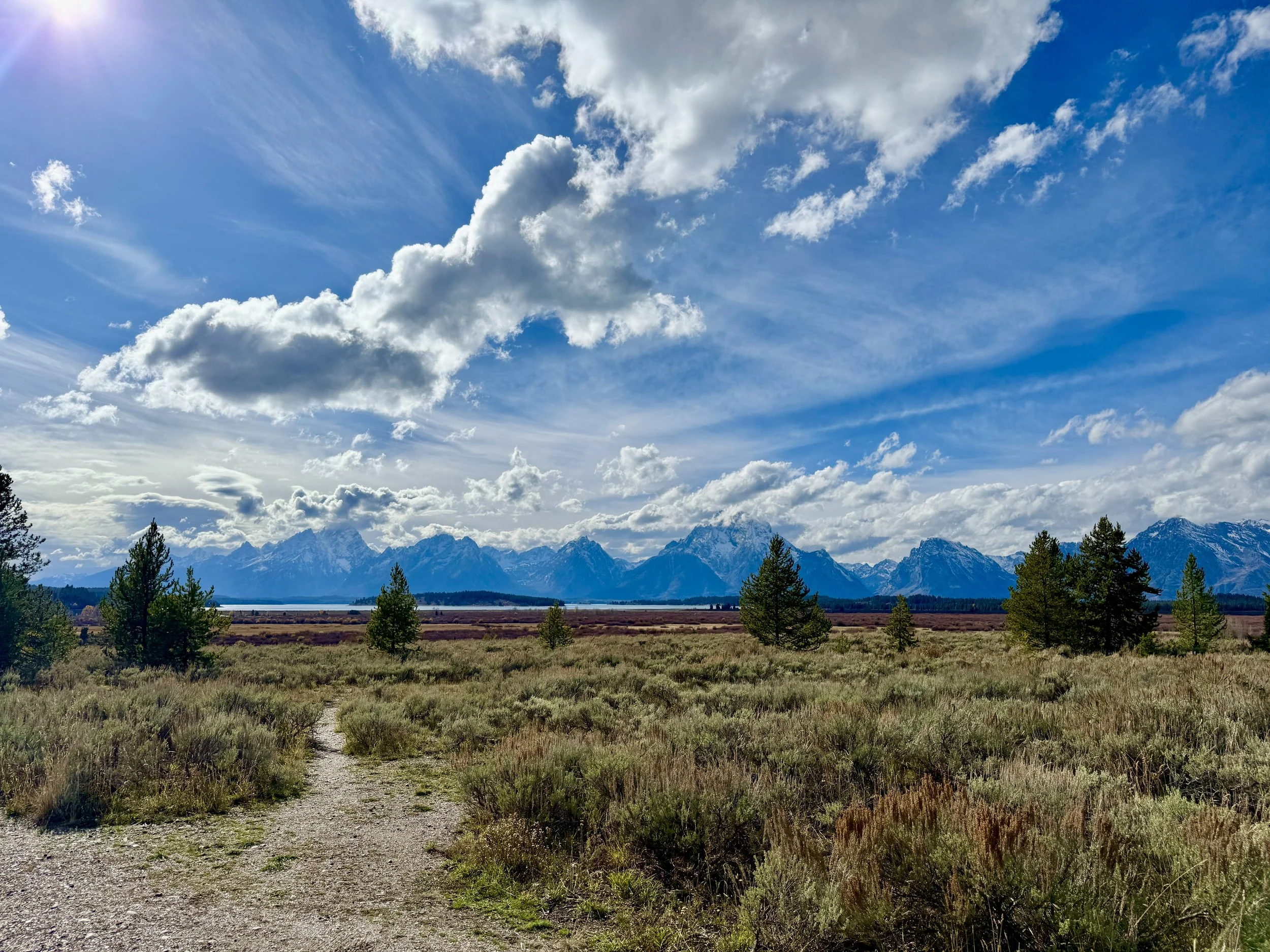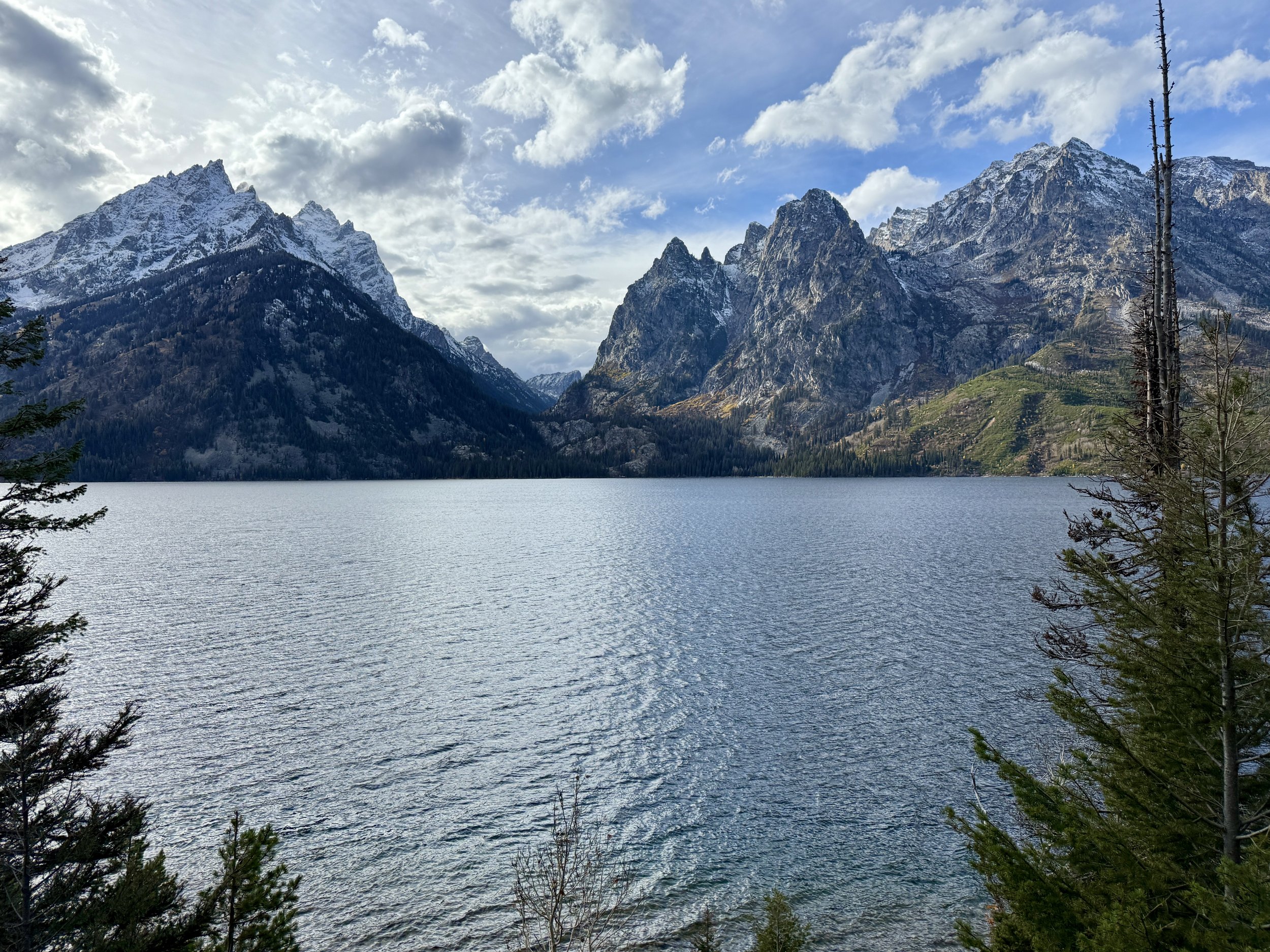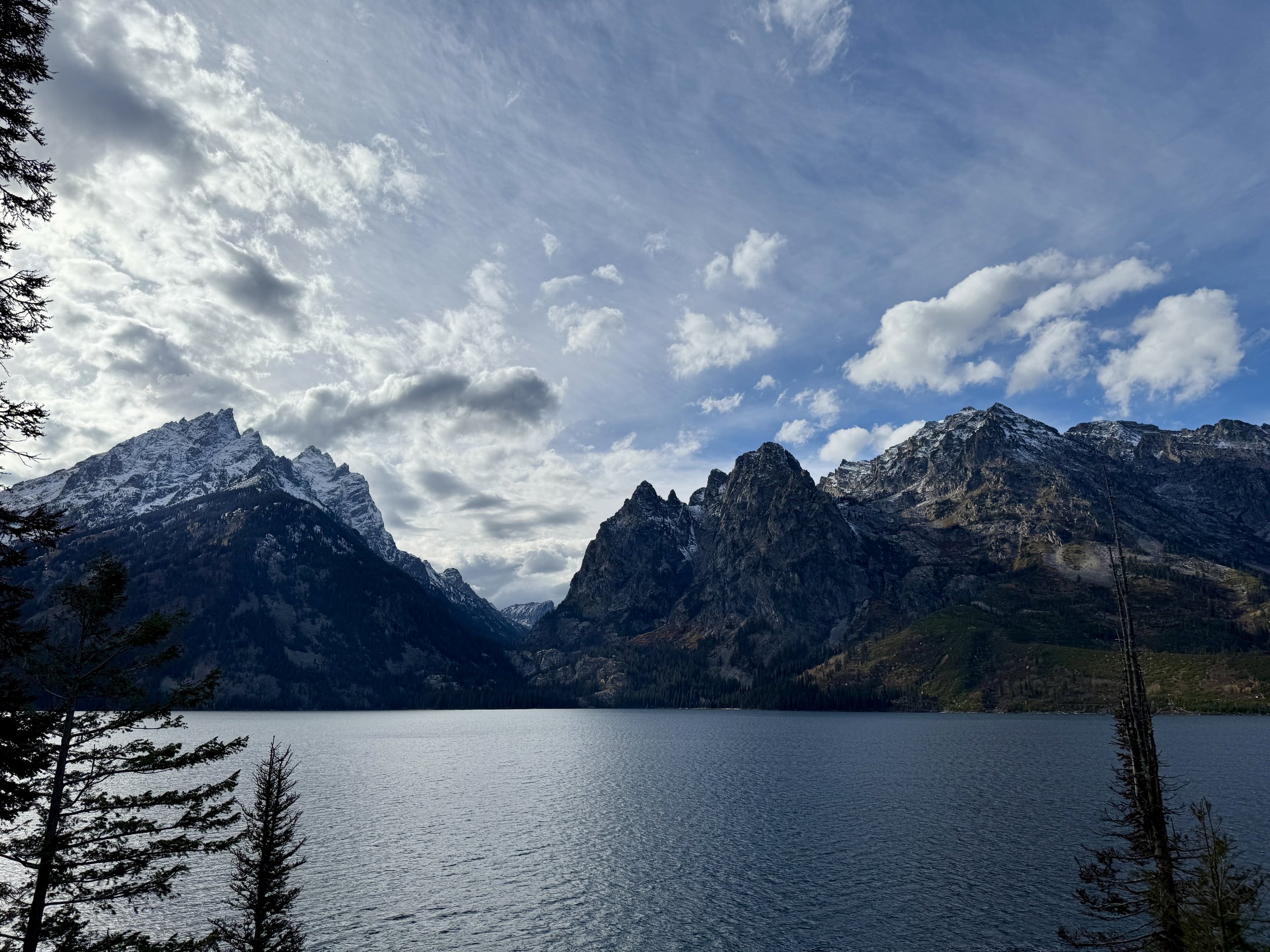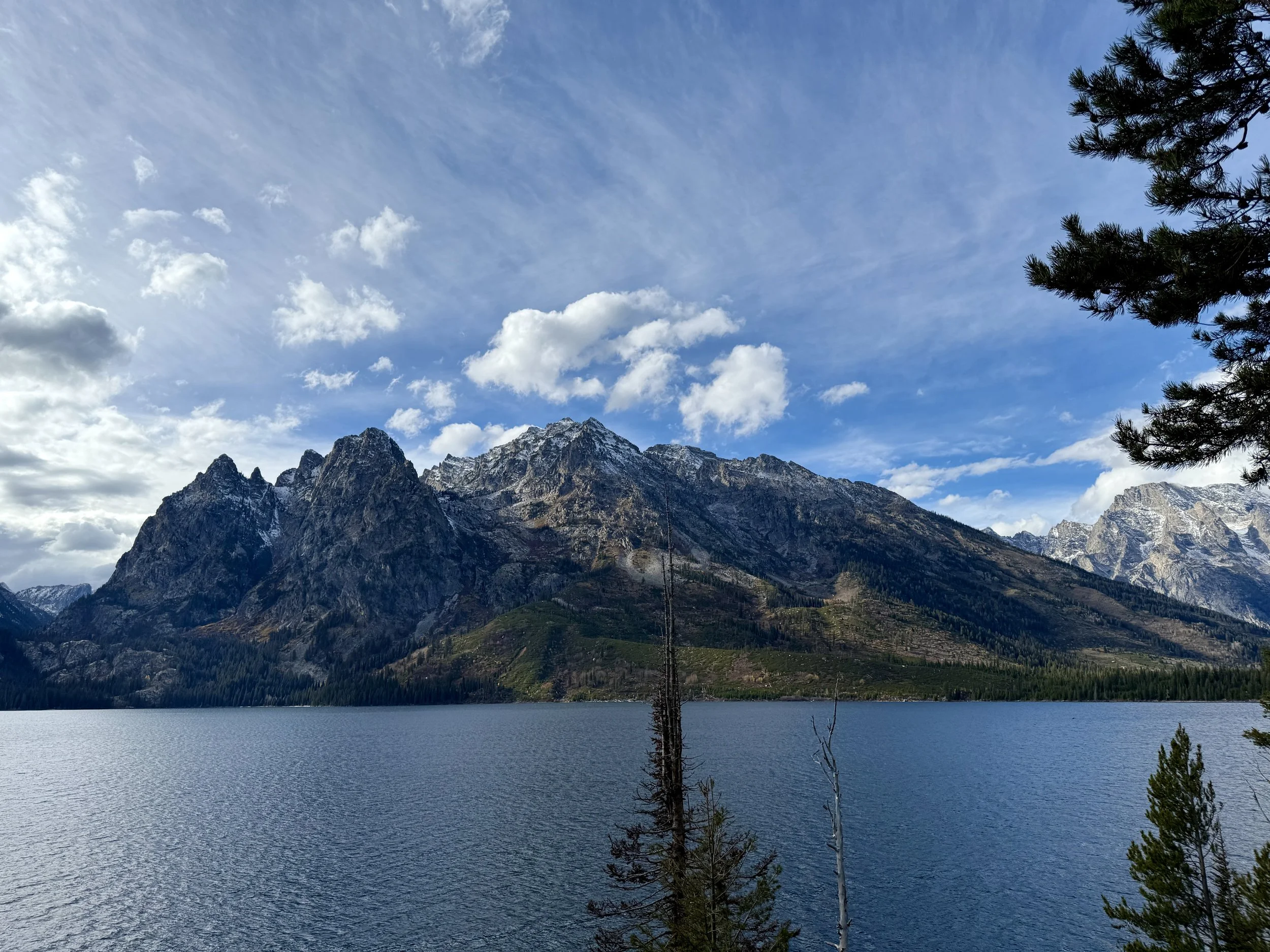Day 26 -The Queen Was Right: Sleep Late, Catch Geysers
October 14th, 2025
We leave a sunny and crisp (39°) West Yellowstone at a leisurely 10:20 a.m.—the Empress’s preferred departure time—and head for Old Faithful, a 32-mile jaunt through the west side of the park.
Soon we arrive, and people are already gathering on the benches to watch the famous geyser erupt. Watching Old Faithful is a Yellowstone tradition—pilgrims from all over the world have come here for generations. While the park’s wildlife and scenery may steal the spotlight today, it was these surreal thermal features—like Old Faithful—that inspired the creation of Yellowstone as the world’s first national park in 1872.
Old Faithful is one of nearly 500 geysers in the park and one of only six that rangers can currently predict. It’s rare for a geyser to be so consistent—its eruption intervals have lengthened by only about 30 minutes over the past 30 years.
We chat with a young couple behind us wrangling three kids.
“She’s supposed to blow at 12:22,” the mom says, pointing to the posted time inside the lodge.
“Excellent timing,” I laugh. We’ve arrived just before noon—the Queen may be onto something with her late starts!
Minutes fly as the crowd thickens. Old Faithful, named by the Washburn Expedition in 1870, was the first geyser in the park to receive a name. On average, it erupts every 90 minutes, lasting 1.5 to 5 minutes, reaching heights of 106 to 184 feet.
At exactly 12:22, she begins to roar—and she doesn’t disappoint. Steam billows, the crowd cheers, and for this old sap, a tear sneaks out. There’s something deeply moving about watching the earth breathe like that.
After the show, we retreat to the RV for leftover pork ribs and brisket before rolling another 20 miles to the West Thumb of Yellowstone Lake.
At 7,733 feet, Yellowstone Lake is the largest high-elevation lake in North America—20 miles long, 14 wide, with 141 miles of shoreline. It freezes solid every winter, the ice sometimes over two feet thick, and thaws in late May or early June. Even in summer, the water averages a brisk 41°F—definitely not for swimming (no sharks here, lol). At that temperature, survival time is only 20–30 minutes!
Along the shoreline, we spot steaming thermal pools bubbling beside the icy lake—pure Jurassic vibes. Awesome to see!
We continue south toward Grand Teton National Park, crossing the Continental Divide at 8,262 feet. Fresh snow from the night before dusts the ground, but thankfully, the roads are clear. As we descend through the southern stretch of Yellowstone’s caldera, the landscape transforms into dense forests of Douglas fir and pine, with haunting reminders of past wildfires.
And then—there they are. The Grand Tetons. First faint and far off, then rising dramatically into view, jagged and awe-inspiring.
Grand Teton National Park sits in northwest Wyoming, named for its tallest peak at 13,775 feet—soaring over 7,000 feet above Jackson Hole. The park spans 310,000 acres, encompassing the 40-mile Teton Range and the upper Snake River. Just 10 miles south of Yellowstone, it’s connected by the John D. Rockefeller Parkway, forming part of the 22-million-acre Greater Yellowstone Ecosystem—one of the world’s largest intact temperate ecosystems.
It’s comforting to know that such a vast, wild land is protected forever. Efforts to preserve it began in the 1800s, and by 1929, Grand Teton National Park was officially established. In the 1930s, conservationist John D. Rockefeller (yes—the same Rockefeller who helped establish Acadia National Park) bought up land in Jackson Hole to expand the park. The man was truly a giant in the world of conservation.
Before heading to Jackson Hole, we detour to Jenny Lake, where the Tetons tower above mirrored waters. The view literally takes our breath away. The Royals pause to soak it all in as the sun dips low across the peaks.
Finally, we roll south 25 miles to downtown Jackson Hole RV Campground for the night. Traffic is thick, commuters hurry home, and 18-wheelers roar through town. When we arrive, we’re greeted by Steve and his wife Lauri, the park managers.
“The RV park’s closing tomorrow,” Steve says, scratching his goatee. “We’re heading back to Little Rock for the winter. Not sure if we’ll be back—there’s talk the town might turn this into affordable housing.” He shrugs, then leads us to our spot in his golf cart.
It’s been a day. The Royals opt for a quick dinner across the street and call it an early night, still buzzing from everything we’ve seen. We fall asleep feeling grateful—for the wild lands, the long roads, and this incredible world we get to wander.
What a wonderful world! 👸🍀🤴

